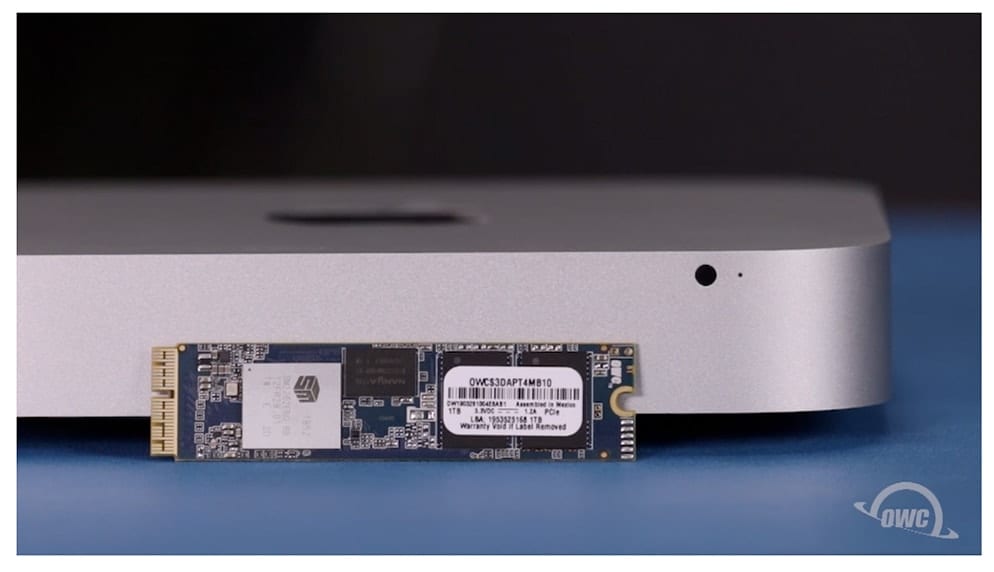

Regardless of it's form factor, an SSD drive or module is a platform agnostic device. With an adapter, some can be retrofitted to tuck an IDE SSD into an iMac or other full-size Macintosh 3.5" drive bay common at the time.ĭisclosure: As an Amazon Associate I earn from qualifying purchases. Another option is the use of a PCIe SSD card in one of the slots which can typicially support either 1 or 2 2.5" SATA SSD drives, or more recent ones that support M.2 SATA or even PCIe SSD modules.Įven for much older G3 and G4 Macintosh models there are a few 2.5" IDE solid-state drives that can be a drop-in replacement for legacy Mac Mini and iBooks. One is to use a readily available drive tray/adapter to convert an off the shelf SATA SSD to 3.5" drive bay.
HOW TO INSTALL SSD IN MAC MINI 2014 UPGRADE
The Aluminum Mac Pro Towers offer two solid-state drive upgrade options. OWC/MacSales is your best bet, followed by MCE which supplies larger, factory original Apple PCIe modules in larger capacities than your Mac Pro came with.

There aren't many aftermarket Apple compatible SSD upgrade options. The Mac Pro cylinder models use a custom pinout PCIe SSD module. We recommend complete iMac drive upgrade kits specific to your model with the proper tools and other things needed to safely complete the drive swap.įor Intel CPU based Mac minis, a 2.5 inch SATA SSD is generally the right choice, for older G4 Mac mini's you want an IDE-ATA interface 2.5" laptop size drive for upgrading. However with the ultra-Slim Aluminum iMac, Apple moved towards 2.5" laptop size SATA hard drives with (optionally) a custom SATA SSD module. Thick bodied Aluminum iMac's used full-size SATA drives as well. White Plastic iMac's - both G5 and Intel used full-size 3.5" SATA interface drives. As the 1st Macs to feature solid-state storage, it has transitioned from 1.8" ATA-IDE to 1.8" SATA I, then II, then III, then onto custom-pinout M.2 SATA modules, to the more recent M.2 PCIe modules. The compatible MacBook Air SDD timeline is most complex.

May Be SATA or PCIe Modules Depending On Model Adapters are available to convert a standard M.2 SSD blade to Apple's custom pinouts if needed, but it's best to buy direct replacements from OWC, Transcend, or Fledging who make Apple compatible modules. As with other Mac's, solid-state modules supplanted standard drive form factors, first with custom M.2 SATA and then as by 2014, custom pinout PCIe NVME SSD modules.
HOW TO INSTALL SSD IN MAC MINI 2014 SERIES
We reccomend the Western Digital Black or a Crucial P1 Series SSD blade.įor New Macs with USB-C Thunderbolt3 Portsįrom the original white MacBooks and early MacBook Pro's through around 2012, a standard 2.5" SATA SSD was generally an easy upgrade. Companies like OWC, Fledging, MCE Technologies, and Dataram make Mac-specific SSD blades appropriate for your particular model/year of Macintosh laptop or desktop.įor Apple users with modern Thunderbolt 3 equipped Macs, you can build your own SSD backup drive using standard pinout ultra-fast NVMe PCIe SSD modules and either a very affordable 10Gbps USB 3.1 Gen2 USB-C enclosure or a costlier 40Gbps Thunderbolt 3 drive case designed to hold standard M.2 form-factor solid-state modules. Mac Compatible SATA & NVMe PCIe SSD Bladesįor upgrades inside your Mac, you need CUSTOM PINOUT Apple compatible SSD modules. They're also ideal for building a DIY external SSD Macintosh backup drive with a low-cost USB or Thunderbolt enclosure.ĭelivers Peak Read / Write SSD Performance When used with a 2.5" to 3.5" drive adapter, sled, or tray it's also the right choice for older Mac Pro towers and iMac computers which used full-size 3.5 inch drives. Shopping for the best SSD for Mac? Internal or external, there's a great range of SSD upgrades you can perform on your Macintosh desktop or MacBook laptop to bring it up-to-speed with high-performance storage.įor upgrading many legacy Mac's and MacBooks, a very affordable off-the-shelf 2.5" laptop-size 6Gbps SATA III SSD is the right choice. Apple Compatible Solid-State Drive Upgrades


 0 kommentar(er)
0 kommentar(er)
